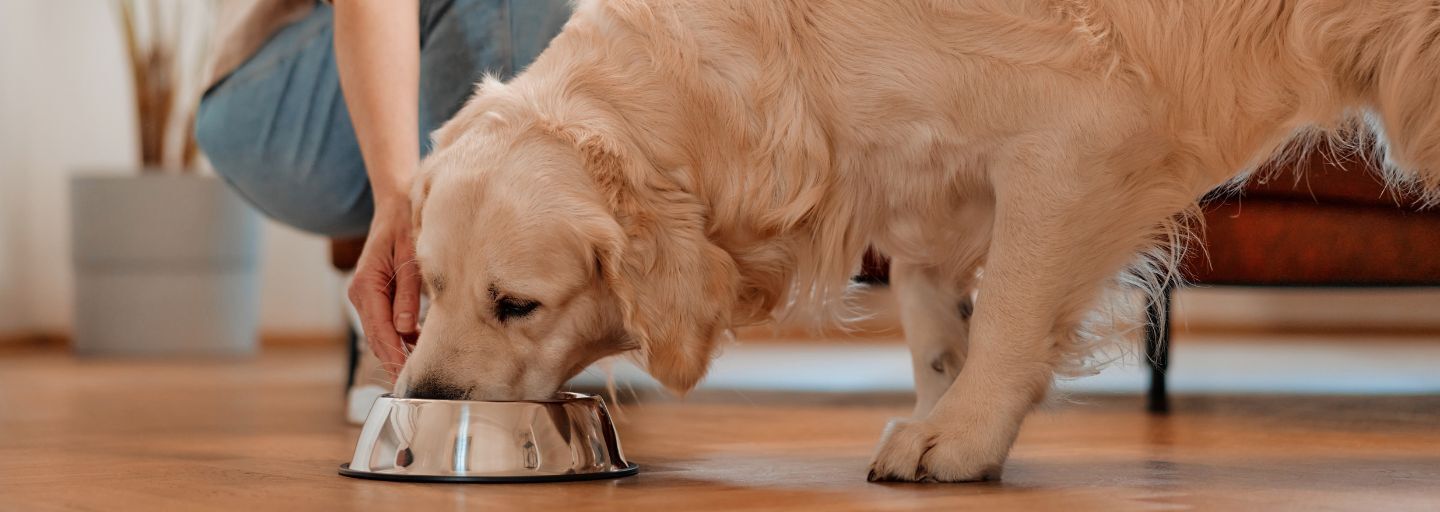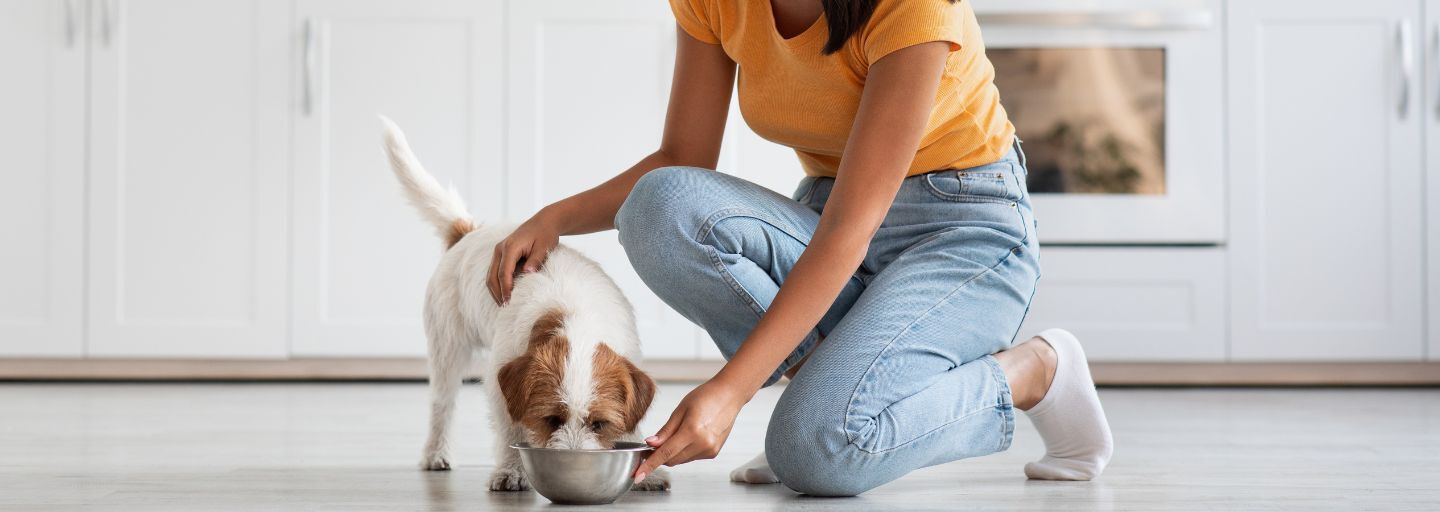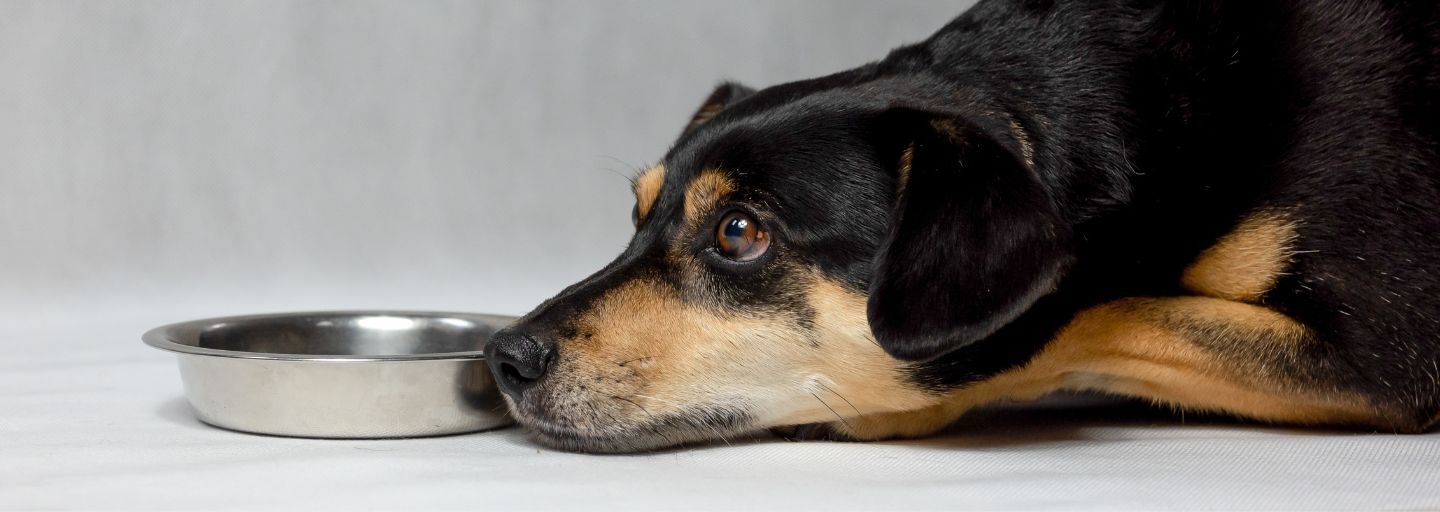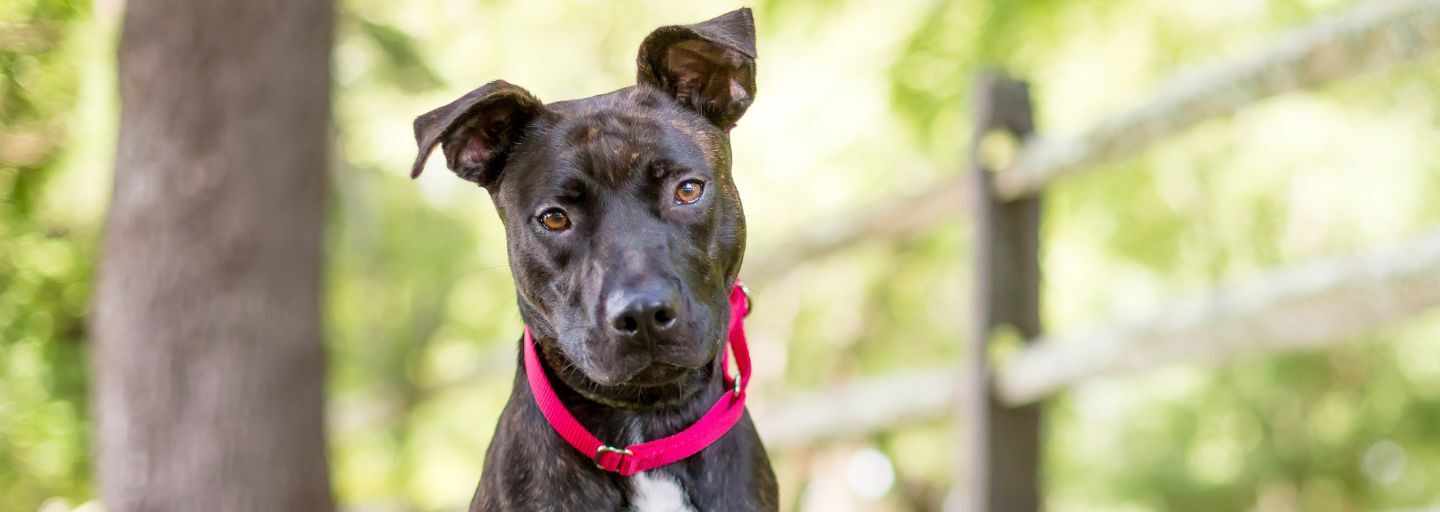A balanced diet is essential in full-grown dogs to ensure they remain in peak health and condition.
What A Dog Needs
Once your dog reaches maturity, it’s time to settle into a regular feeding routine. To maintain an optimal body condition, your dog’s diet needs to include the right balance of the six major nutrient groups:
- Proteins;
- Fats and oils;
- Minerals;
- Vitamins;
- Carbohydrates;
- Water.
Any good-quality, manufactured, complete pet food should provide your dog with this basic nutritional balance. Whether you serve canned or dry, or a mixture of the two, is really a matter of personal preference – yours and your dog's!
Spoilt for Choice
Advances in pet nutrition mean there is now a wide range of commercially produced dog foods designed to match more accurately your dog’s specific needs.
Note, however, that breed and size can make a difference. Smaller breeds have a faster metabolism, needing twice as many calories every day. Larger breeds, as well as having larger appetites, benefit from a different mix of minerals and vitamins to support fragile joints and cartilage.
If your dog is particularly active, you might consider a specially formulated 'active' diet. This will provide higher levels of fat, protein, and vitamins such as B12 to help release the energy from food. Less active dogs require less fat, so feeding a ‘light’ formula will help avoid weight gain.
Some dogs develop sensitivities or allergies to food groups. Your vet can recommend an alternative formula to help. Special diets are also available to treat certain health conditions or aid recovery.
But unless your dog’s circumstances change dramatically, there is no reason to break your regular feeding routine from the early days of adulthood at 12 to 24 months, to the end of the sixth year.
Dog-Feeding Checklist
- Feed your dog once or twice a day as part of a regular routine. Deep-chested breeds such as the Doberman will particularly benefit from two smaller meals.
- Serve food at room temperature to ensure your dog can taste and smell it properly. If you are feeding canned food, warming up an opened can may take up to two hours once it has been taken out of the fridge. Alternatively, you might consider microwaving wet foods (out of the can) for a short time. But avoid serving food that is either too hot or too cold.
- If feeding dry complete food, store it in a dry, clean environment. Resealable packaging or an airtight container keeps it tasty by sealing in the aroma.
- Your dog should be fed in a quiet place away from interruptions and away from where you eat. It's always a good idea to feed on a surface that is easily cleaned, like a tiled floor or a mat.
- Don't allow children to interrupt your dog when he is eating, or he may mistake them as a 'predator' trying to steal food and react aggressively. If you have more than one dog, feed them separately to avoid bullying or fighting.
- Try not to feed your dog immediately before or after exercise. Many dogs are susceptible to a twisting of the gut and blocking the stomach, which requires immediate veterinary attention. About an hour’s grace on either side is advisable.
How much should you feed your dog?
Follow the feeding guide on the back of the pack, but remember the guide is only there to give you an idea. Every dog is an individual, so the most important consideration is to feed enough to maintain a lean, healthy condition. Always provide a bowl of fresh drinking water.
If you feed biscuits or treats, remember to reduce your dog’s main meals accordingly. Treats should never constitute more than 15 percent of your dog’s diet.
What not to feed your dog?
Although many owners do, it is not recommended to feed your dog human scraps, as it's almost impossible to create a well-balanced diet as a result. Never feed fatty scraps or uncooked vegetables, as your dog will put on weight. Raw meat can be infected with bacteria, and bones can damage teeth and cause obstructions in the gut. It is also not ideal to feed your dog cat food, as it is designed for cats and doesn't have the right balance of vitamins and minerals.
Never feed dogs chocolate, as it is toxic to their systems. Watch more about what to feed your dog here.
Changing dog food
There are, of course, some occasions when you may need to consider switching to new dog food: a medical condition may require a special diet; your dog may be putting on a few pounds, or he may just go off his usual brand. Because dogs can often be sensitive to changes in their diet, try to make any transition as smooth as possible. Start by mixing the new food with your usual brand before gradually increasing the proportion over seven to 10 days until your dog is only eating the new food.
PURINA brands for Adult Dogs
PURINA produces many of Australia's leading dog foods, each the result of the very latest scientific advances in quality, taste, and nutrition, designed to give you - and your pet - an outstanding choice of recipes and formats for every life stage and lifestyle.



